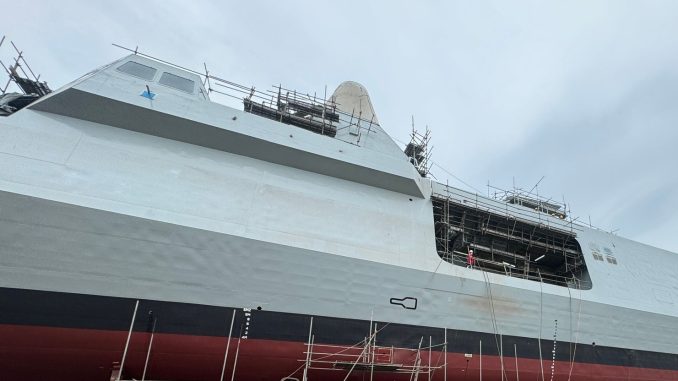
SHAH ALAM: It appears that the Lumut Naval Shipyard (Lunas) has installed parts of the ship sensor module – likely the radome which contained the main radar sensor – on the Maharaja Lela, the first LCS. This is a break from the method adopted by Naval Group for the Gowinds, it built for other navies as the whole sensor module called the Panoramic Sensors and Intelligence Mast (PSIM) is installed at one go on the ship once it is already launched into water.
The Naval Group-designed PSIM combines an integrated mast, complete with the main radar (Thales Smart-S Mark 2 3D radar) under the radome and all the other sensors, plus the operations rooms and the associated equipment compartments into a single module.
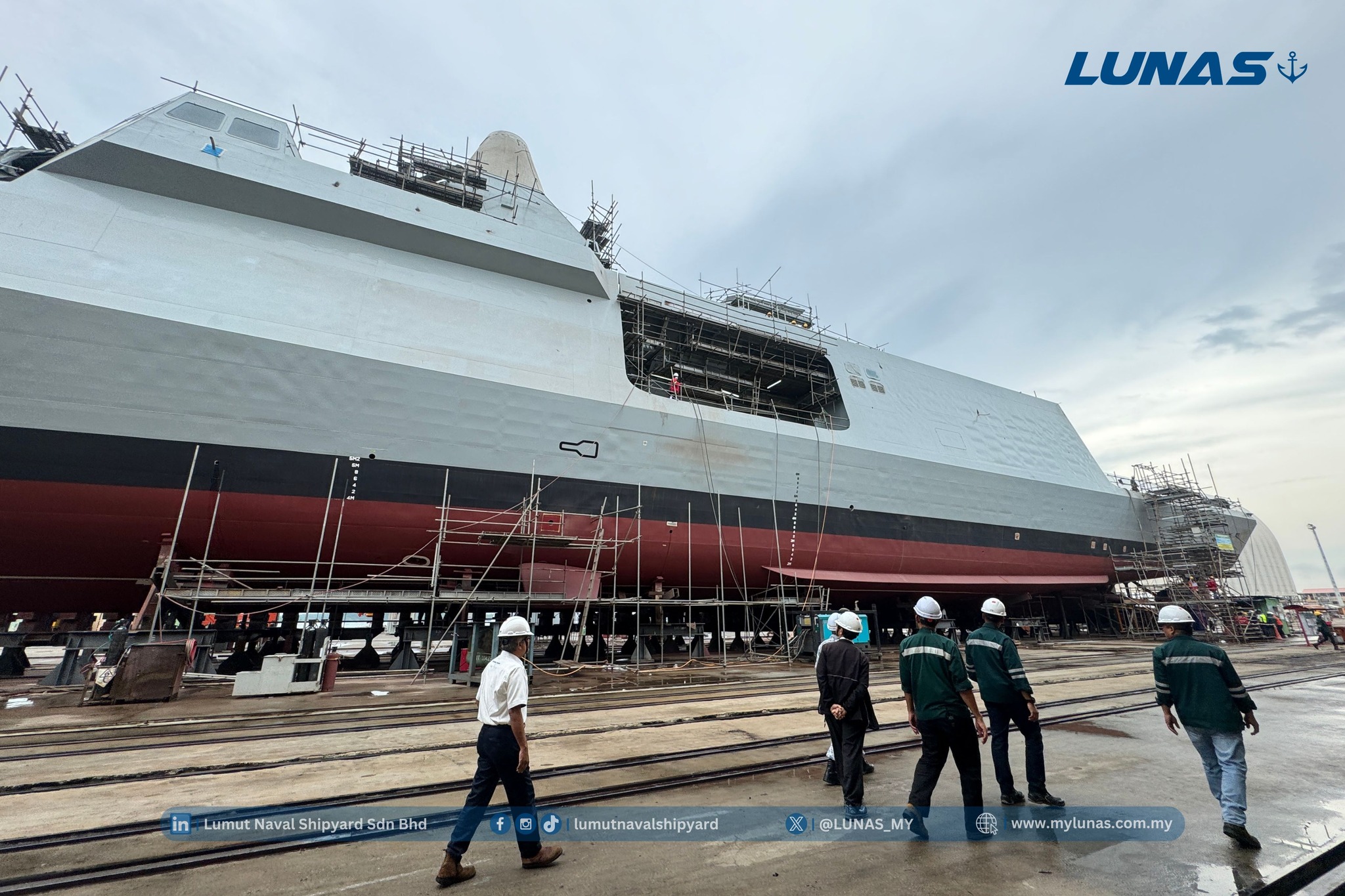
Maharaja Lela it appears was taken out of its hangar to allow for the installation of parts of the sensor module. This may also mean that the parts of the PSIM have also been installed on her.
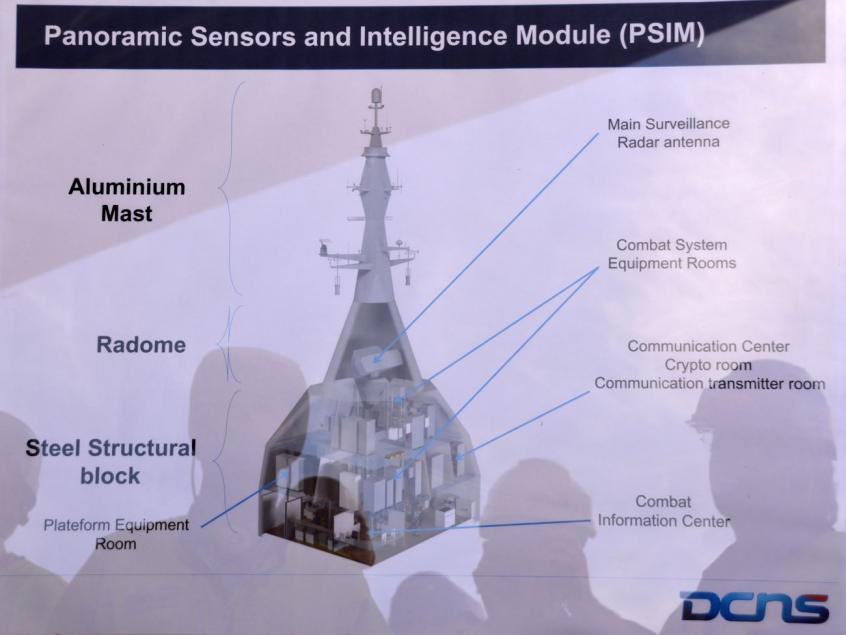
From her appearance, it appears Lunas is getting ready to put her into water – using the shipyard ship lift – next month as this was the plan announced previously by the Defence Ministry.
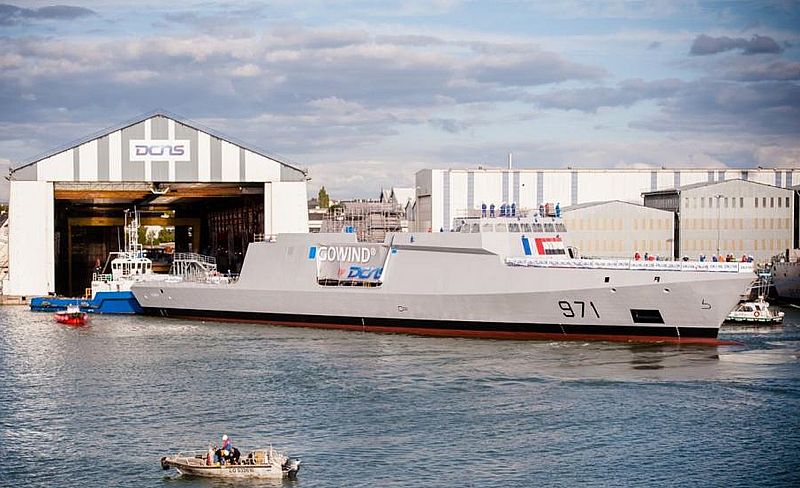
Lunas published the picture of Maharaja Lela with the sensor module on its Facebook page without saying anything about the latest development. The post was about a visit to Lunas by one of its board members to be briefed on the latest development of the LCS on May 14.
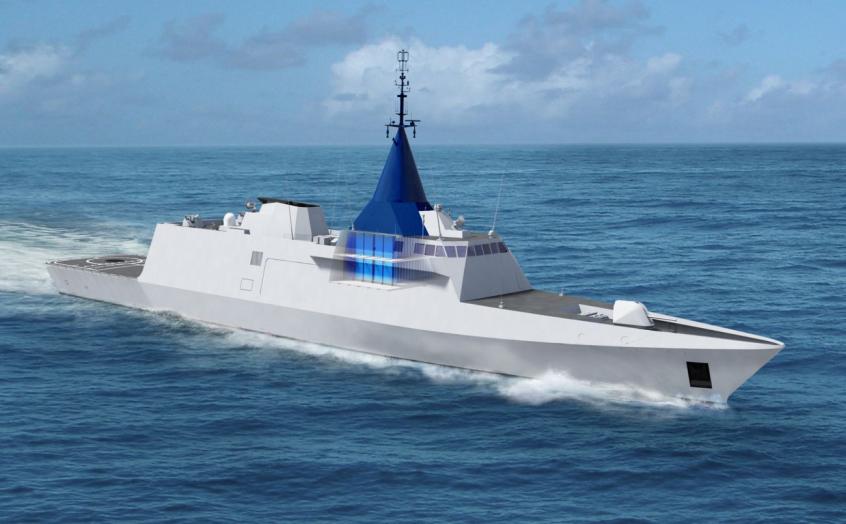
It is interesting to note that another Lunas post on a visit to the shipyard on May 8 showed Maharaja Lela still under a hangar and without the sensor module installed on her. This means that work to install the sensor module was done within the last one week.
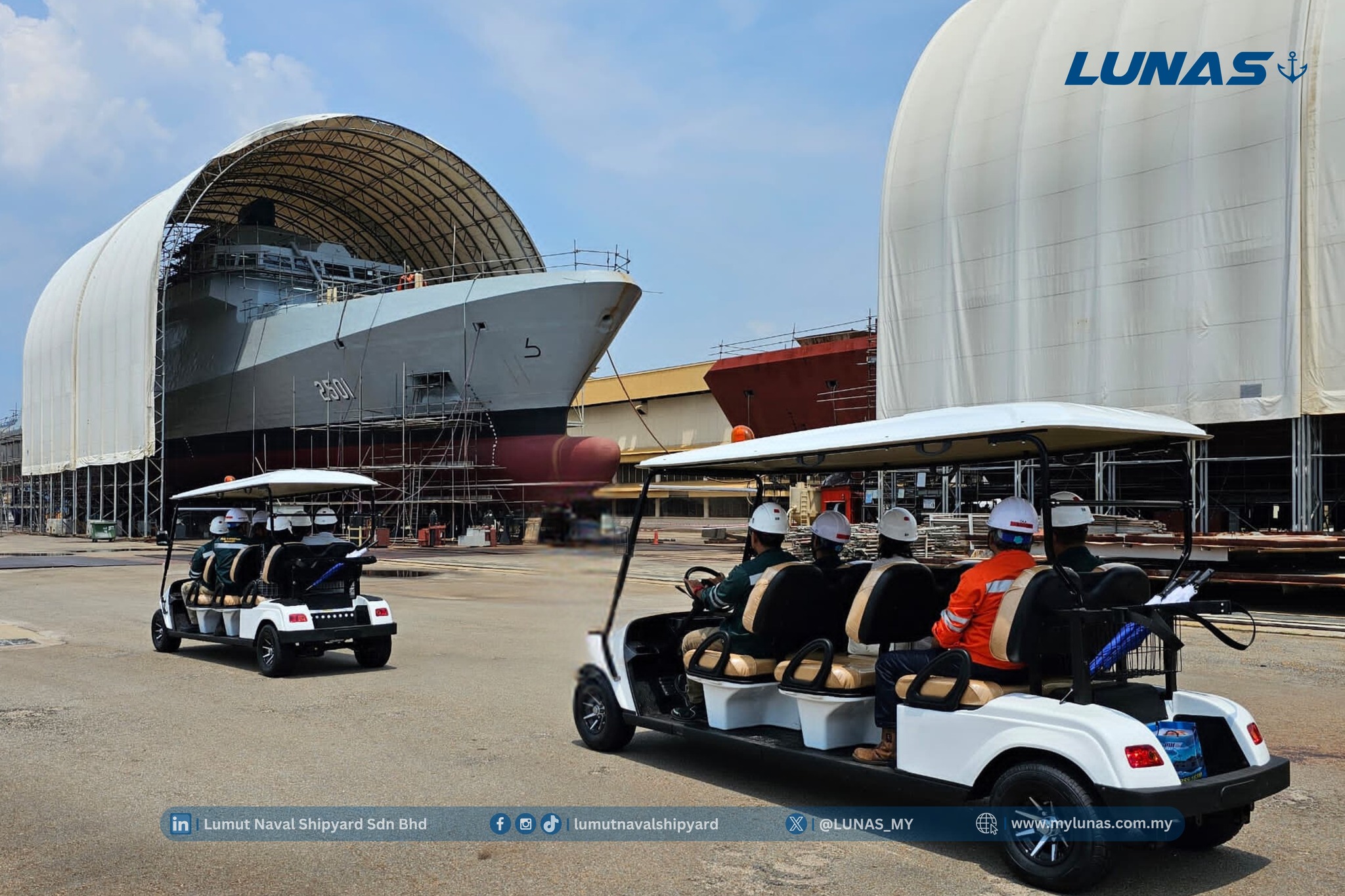
It must be noted at her launch in 2017, Maharaja Lela was fitted with a fake PSIM module for the ceremony. The matter was revealed during the Public Account Committee hearing on the LCS project.
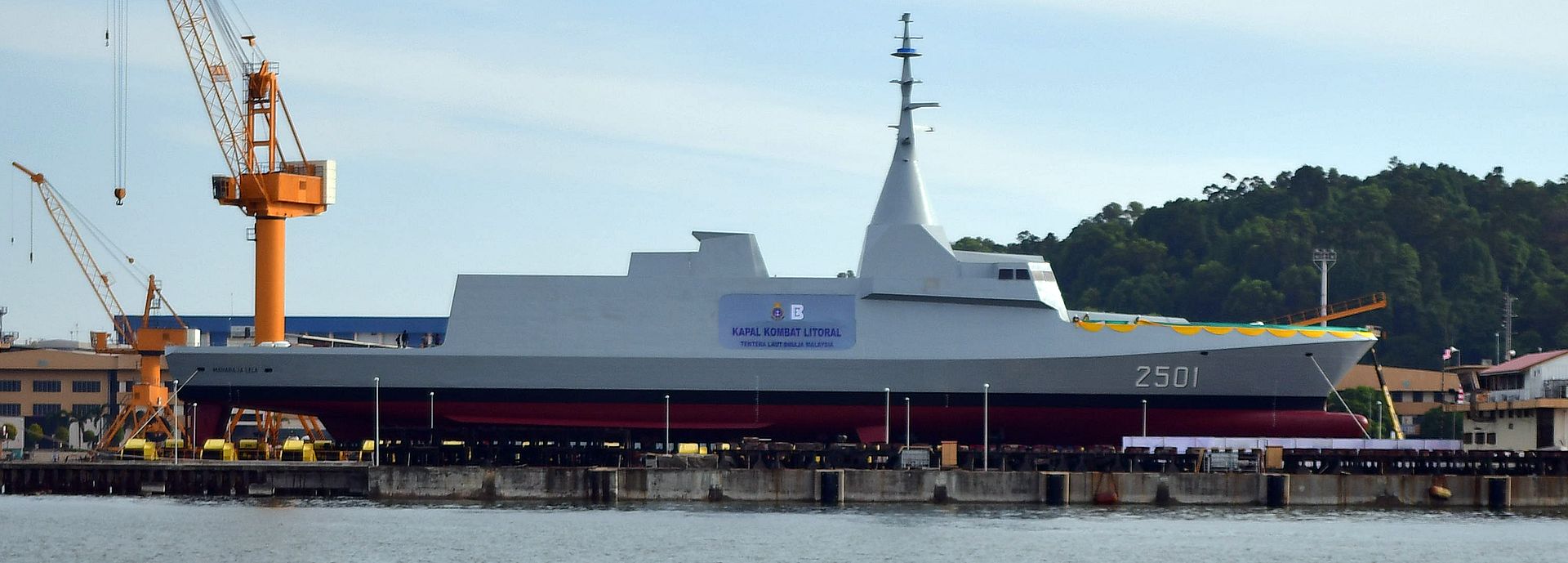
The post by Lunas on its Facebook page.
Dato’ Andri Aidham, a member of our Board of Directors (BOD) and also an oversight committee member, conducted a special visit to Lumut Naval Shipyard on Tuesday, May 14th, 2024. The visit was to assess and support the ongoing progress of the Littoral Combat Ship (LCS) project.
The visit began with a detailed briefing on the LCS project’s status in the Baung Meeting room, followed by an in-depth yard tour. Dato’ Andri was accompanied by key personnel leading the project; Mr. Rosnizam Che Puteh, Director of LCS Project, Mr. Muhammad Aidil Abu, Deputy Project Director of LCS LUNAS and First Admiral Ir. Ts. Franklin Jeyasekhar Joseph, Royal Malaysian Navy (RMN) LCS Program Director General.
LUNAS will continue to uphold our commitment in delivering excellence and dedication in ensuring that the LCS project is completed and delivered with the highest standards of quality.
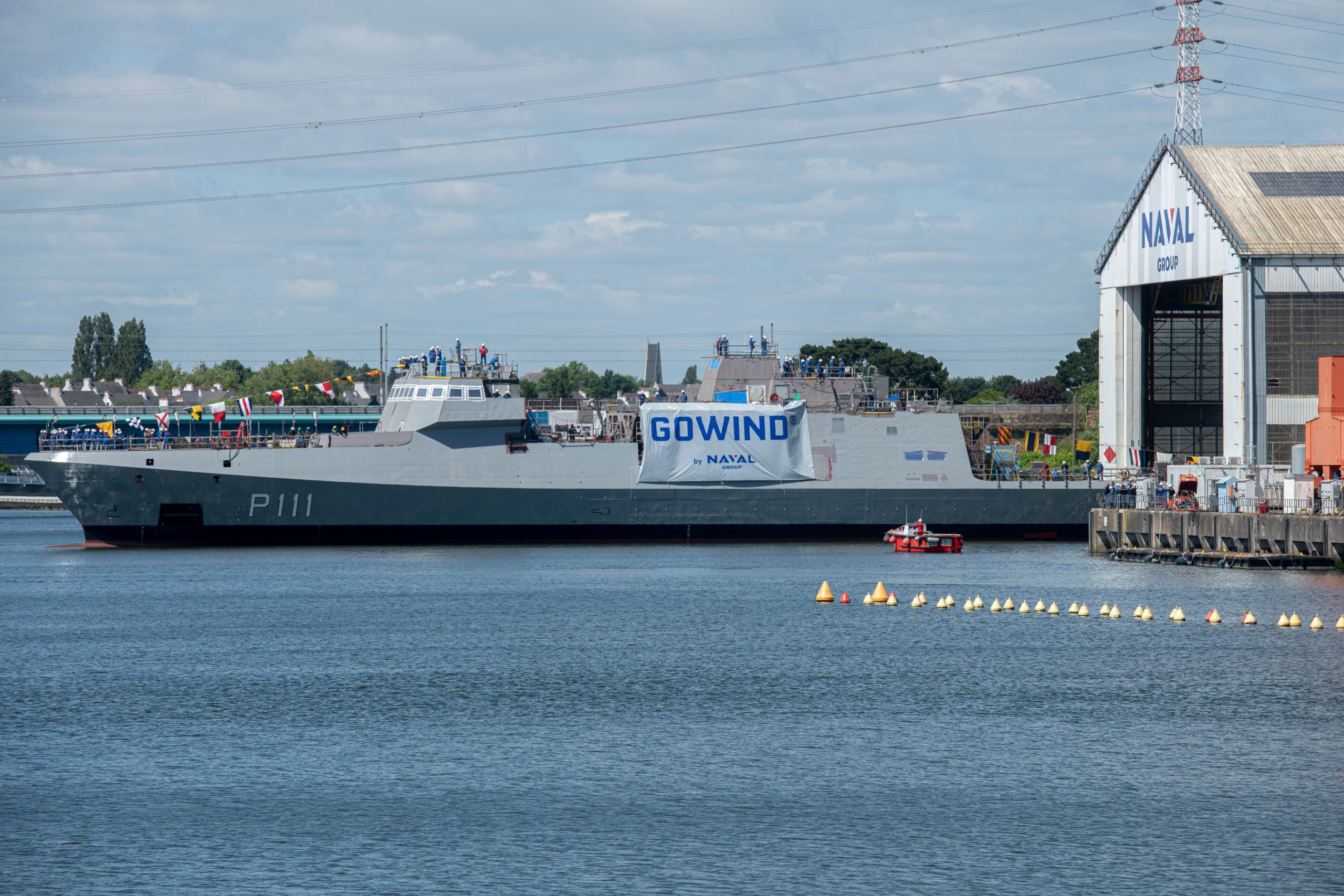
It is interesting to note that in an interview with Naval News, a Naval Group official stated that the company has been given a new contract which gave the full design authority for the project. Previously, Naval Group was only given the task of validating the production design of the ships after it was done by personnel from Boustead Naval Shipyard. The official said the new contract will allow for the completion of the project.
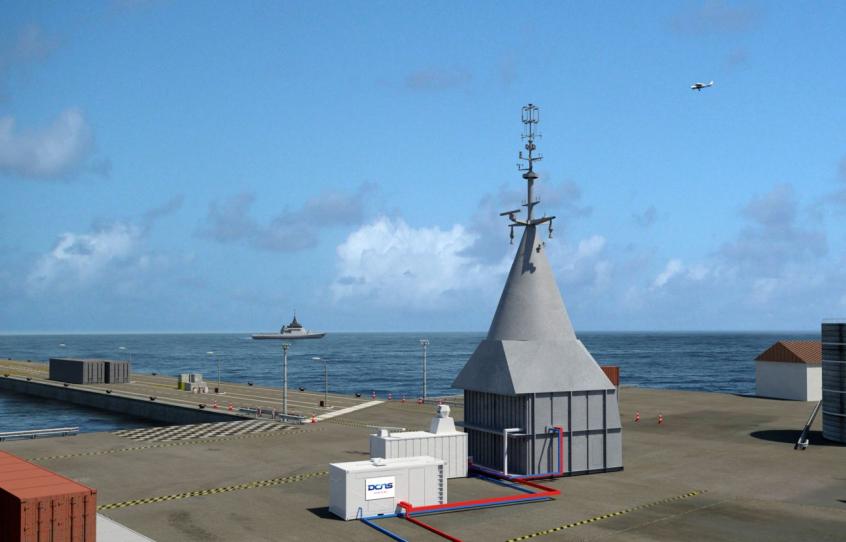
— Malaysian Defence


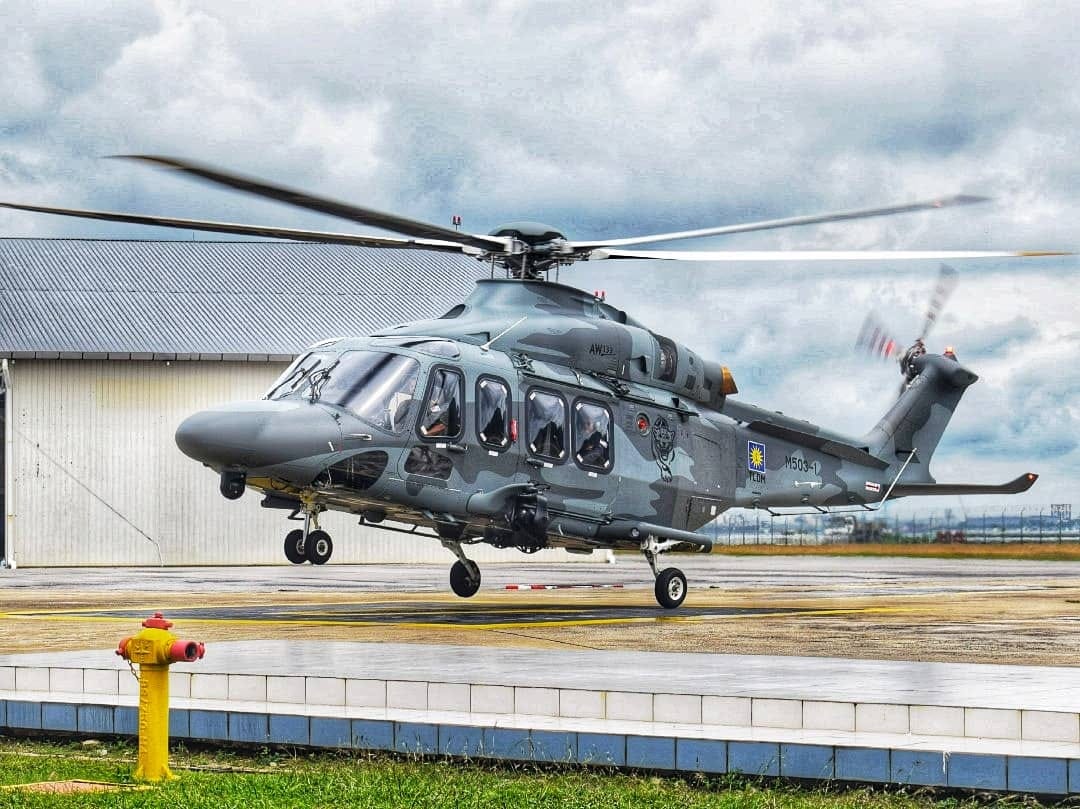
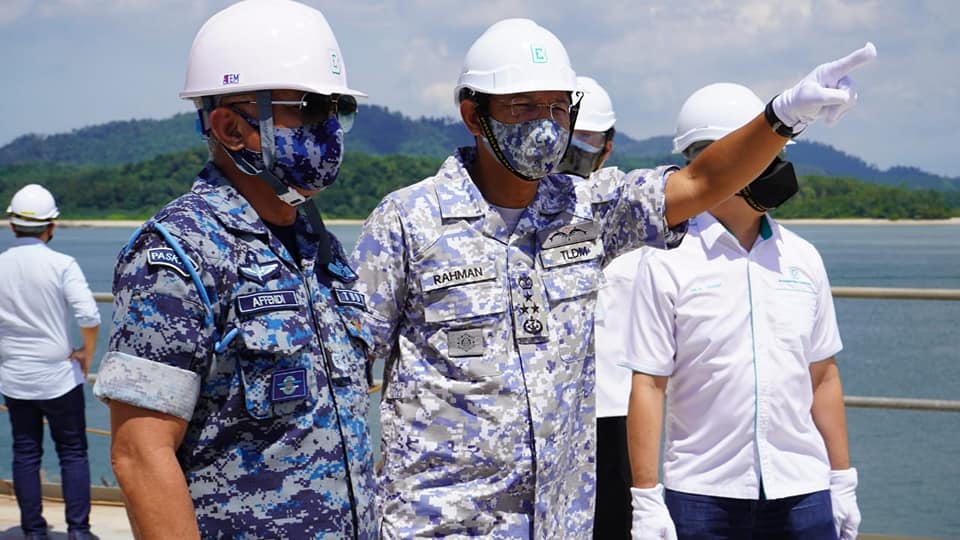
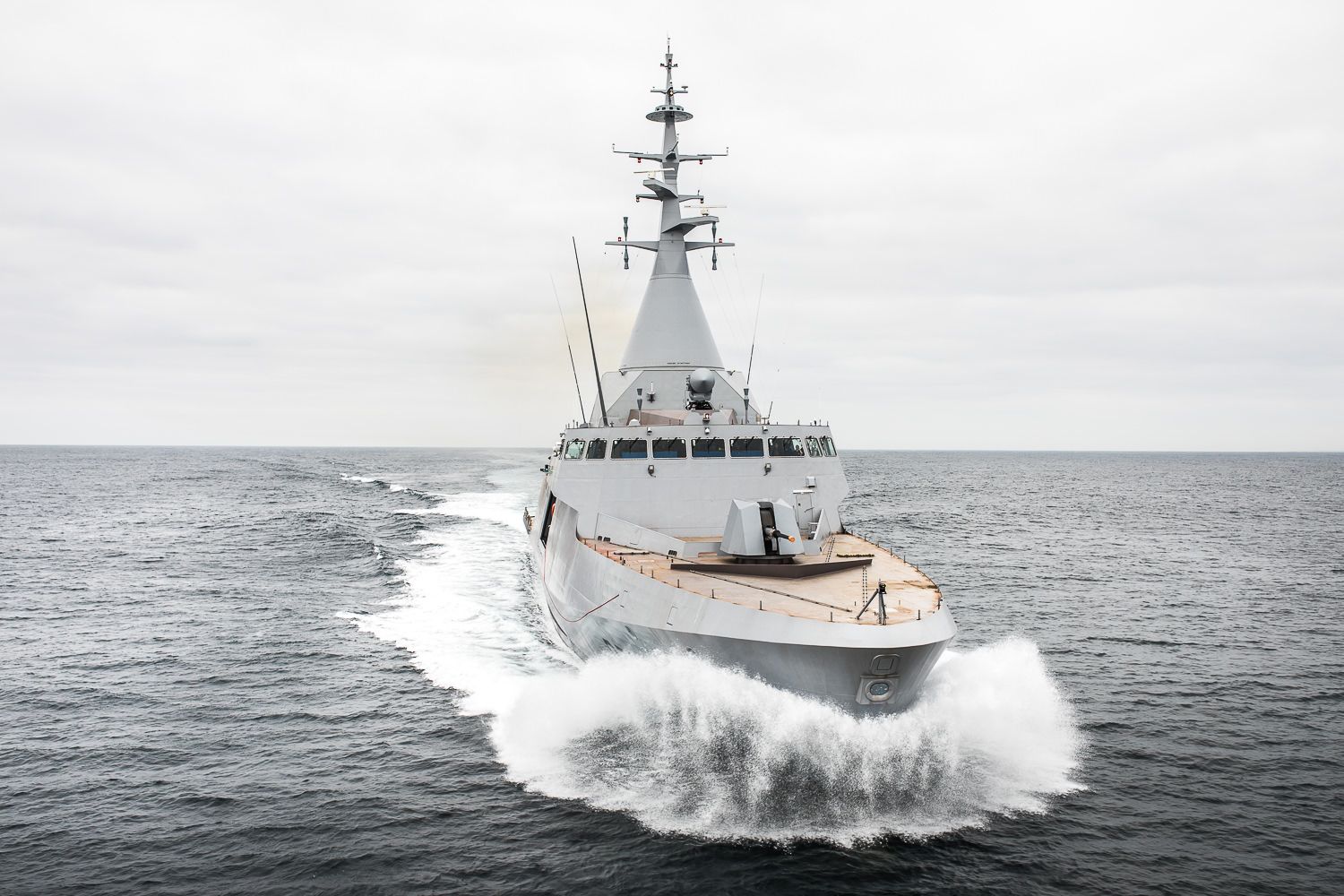
the tentative launch date is next week, 23rd May 2024
Full design authority. This is a right move. Don’t waste time to say we can complete ourselves. We are far away being that stage.
Better check if its real lol. Because fool me once shame on you fool me twice shame on me lol. Anyway jokes aside, yes i am so happy they gave NG the design authority. Its just make sense because they’re the designer. I wonder why they put the radomw before psim? Could there be some defects or certain areas not done properly? Or it is just to make the psim easier to install. Hah
Err Im skeptical if that mast is real, likely not.
I been pushing for NAVAL to takeover since the whole program has stopped. But at this stage and the lateness of completion, Im not too excited that design works has finally pass back to NAVAL, with the local design done 96% and NAVAL confirmed to 84%, its just a little push more to finish so its not like NAVAL could help us a lot except for speeding up the already designed works confirmation. Maybe the reason is because the design team members left to that we could not complete the balance 4% local designs?
I think the government felt it was taking too long
Hulabalang
Curious to know your opinion in regards to HMAS Anzac III?
TQ
Maybe not taking too long but felt they cannot deliver.
@ steelshot
My opinion on the HMAS Anzac?
Compared to the older Type 23 (those that is available for transfer), i would say yes to HMAS Anzac. It is @ but more younger (around the same age as our Lekius), and has been recently upgraded with phased array radars.
As we need ships urgently, i would prefer TLDM to take 2-3 used frigates of the same type rather than wait for years to get 3 LMS Batch 2 corvettes. We can use them for 5-6 years, as intrim for the Gowinds. When all Gowinds (6 units please) are operational, these can be stripped of complex equipments and passed to APMM as large OPVs.
Joe-its just a little push more to finish so its not like NAVAL could help us a lot except for speeding up the already designed works confirmation
I think the gov just want to be safe than sorry. After all the meetings, discussions & whatnot them gov still not convinced the local contractor can finish the designs. Even with the 4% balance. That’s on paper but on reality we don’t know. What kind of sub par construction & inconsistency we are looking at. They changed the workers so many times. Orang melayu kata banyak sangat tangan mengusik. Just give it to NG. Bite the bullet & better safe than sorry.
… – ”i would prefer TLDM to take 2-3 used frigates of the same type rather than wait for years to get 3 LMS Batch 2 corvettes”
– The ”2-3 used frigates” come with a penalty. Need a reminder that the cost conscious and resource strapped RMN has turned down offers before for precisely this reason?
– The Batch 2s are not an interim measure. As has been explained even if all the LCSs were delivered on time there would still be a requirement for Batch 2s. An interim measure [ostensibly] were the Laksamanas; for the delayed Lekius.
” these can be stripped of complex equipments and passed to APMM as large OPVs.”
The notion that the MMEA might not want these aged ships because of sustainability issues or other reasons naturally did not cross your mind. It’s all what looks great on paper for you. Need a reminder that the MMEA already has large footprint because of the hodgepodge of different hulls in service and does not again want to be placed in a position where t’s forced to get aged; high mileage and challenging to run assets? Same with the Kedahs; on paper all looks good. In reality even if stripped down will they be wanted or suitable for the MMEA? Another is is by the time the RMN is actually ready to transfer them they’ll be very aged.
… – ”It is @ but more younger (around the same age as our Lekius), and has been recently upgraded with phased array radars.”
As usual; all the plus points only. They are [like the Dukes] larger than any combatant we
operate; have much larger manning levels; are fitted with various things which we don’t operate; are aged and are high mileage? What would be the annual operating costs? how maintenance intensive are they? East yo say something is an ”interim measure” any idea as to the amount of spares that need to be stocked and the various systems/components which will have to be supported by people who will have to be trained? Yes there are plus points but there are also penalties; not as easy as you make it out to be.
“I think the government felt it was taking too long”
If that is the case, its too bad it took us 5 long years to realise that. If we had done this from start perhaps we may have a few ships ady in use now.
Your opinion is well noted Hulubalang.
I will add more + points of the ANZAC-class compared to the Type 23
– 3,600 tons displacement, a bit bigger and heavier than the gowinds. Type 23 is massively bigger at 4,900 tons displacement
– There are those here that really wants the ESSM right? Yes the ANZAC is equipped with ESSM, capable of maximum of 32 ESSMs quadpacked into 8cell Mk41 VLS. Now is a chance for us to get a feel of using ESSM, to have informed decision for our next brand-new frigates. The ships also FFBNW 8 more Mk41 VLS. If we want, they can be equipped to actually carry a total of 64 ESSMs, that is quite a deep missile magazine to do point/limited area defence.
– only recently been upgraded with AMCAP upgrade program which gives them a suite of CEFAR Phased Array Radars. These are much more advanced than the radar fitout on the Type 23
– only 1 gas turbine. Should be more economical to operate compared to the Type 23.
– the reason for her retirement is to free up budgets for future ships, not really because she is in bad condition. The class have just been heavily upgraded with CEFAR Phased Array Radars. The same cannot be said for the Type 23s.
– 2nd ANZAC-Class should be available in 2026. Probably can ask Australia to hot transfer it earlier to TLDM probably in 2025?
“ANZAC-class”
With gas turbine engines, 5in guns, ESSM, Harpoon, Mk32 torps, and needing 170+ crew members each, it has nearly no commonality with our current or upcoming ships.
@ joe
” has nearly no commonality with our current or upcoming ships ”
As is the Type 23, and even the ADA-class LMS Batch 2 Corvette.
Harpoons can be swapped with NSM
Mk32 launchers can use TLDM current A244-S torpedoes no issues.
Our current Lekius has 146 crews. KD Hang Tuah has 210 crews
Im not too enthused with Type 23 either as much as the ANZAC… unless their given free and we can beached them on our SCS shoal as unsinkable battery.
”unless their given free and we can beached them on our SCS shoal as unsinkable battery.”
There was a Jap cruiser which was damaged during the Leyte Gulf battle. She made it to Singapore but couldn’t be fixed so she spent the rest of the war – alongside another ship in a similar predicament – as a floating AA ship.
When Yamato set sail during the battle of Okinawa she didn’t have fuel to return. The intention was for her to beach herself and use her guns on the Americans.
And JMSDF still keep the “floating AA” with its Aegis destroyers abet not tied alongside or beached.
The USN has plans for ”large USVs” which will serve as ”floating magazines”; platforms whose job is only to be launch platforms for missiles. Over the years long before ”unmanned” and ”robotics” entered the picture there were paper plans for barges to be fitted with missiles. In ”Harpoon Classic” [one of the most realistic naval games”] there were several scenarios in which barges with SAMs were present.
Ultimately, as explained to ”…” when he mentioned a ”layered” defence and how we – according to him – could have one; it’s all about networking. The JMSDF ships will be networked to other ships and to long distance ground based radars; as well as to the JASDF’s AEW platforms. A ”layered” defence would entail having everything from V-SHORADS to SHORADS to longer ranged systems to handle threats ranging from a micro UAS flying at tree top level to a fighter flying at 25,000 feet to a ballistic missile flying at Mach 20; as well as some level of redundency.